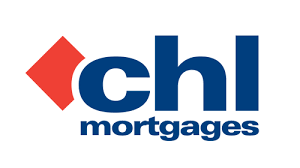Regulated Buy to Let Mortgages: What They Are and When to Use Them
Regulated buy to let mortgages are different to other buy to let mortgages. Most landlords are familiar with standard buy-to-let mortgages, which are designed for purchasing rental properties as investments. However, there’s a lesser-known product in the market that serves a very different purpose. The regulated buy-to-let mortgage.
Unlike traditional BTLs, regulated buy-to-let mortgages are covered by FCA (Financial Conduct Authority) regulation because of the way the property is used. If you’re considering renting to family members or letting out a property you once lived in, this type of mortgage may apply to you.
In this article, we’ll explain how regulated buy-to-let mortgages work, how they differ from standard BTLs, the benefits they offer, who they’re suitable for, and which lenders provide them.
Introduction to Buy-to-Let Mortgages
Buy-to-let mortgages are designed for individuals who want to purchase a property with the intention of renting it out, rather than living in it themselves. Unlike a standard residential mortgage, a buy-to-let mortgage is tailored to the needs of landlords and investors who are looking to generate rental income from their property.
These mortgages work by allowing you to borrow money to buy a property, with the expectation that the rent you receive from tenants will help cover your monthly repayments and other costs.
When considering buy to let mortgages, it’s important to compare different mortgage deals and mortgage products, as each lender will have their own criteria and terms. Factors such as the property’s location, expected rental income, and your own financial situation will all play a role in determining which mortgage deal is right for you.
Before making a purchase, take the time to research how buy to let mortgages work, what lenders are looking for, and how your income and credit history can affect your application. Understanding these basics will help you make informed decisions and secure the best possible deal for your investment.
What Is a Regulated Buy-to-Let Mortgage?
A regulated buy-to-let mortgage is a specific type of BTL mortgage that is regulated by the FCA. It applies in situations where the rental property does not fall under the definition of a “pure” investment. The most common example is when a family member will be living in the property.
Because there’s an element of personal use or family occupation, lenders and the FCA treat this as residential lending, not just a commercial investment. This triggers regulatory protections such as affordability checks, duty of care, and access to the Financial Ombudsman which don’t apply to standard BTLs.
Regulated buy-to-let mortgages are also available to first time landlords and those who have not previously owned their own home. Mortgage applications for regulated buy-to-let are open to a range of applicants, including first time landlords and those without prior home ownership.
How Regulated Buy-to-Let Mortgages Differ from Standard BTL
Although they sound similar, regulated and unregulated buy-to-let mortgages have key differences in terms of structure, eligibility, and regulation:
Feature | Standard Buy-to-Let | Regulated Buy-to-Let |
|---|---|---|
FCA Regulation | No | Yes |
Occupancy | Let to tenants | Let to family members or previous owner |
Affordability Assessment | Based on rental income | Based on personal income and expenses |
Consumer Protections | Limited | Full FCA protection applies |
Use Cases | Investment rental only | Renting to children, parents, or self (temporarily) |
Interest Rates | Lower | Slightly higher due to regulation |
Mortgage lenders may lend based on individual circumstances, and may impose a limit on the number of buy-to-let mortgages you can have or the total amount you can borrow. These limits and lending criteria can vary between lenders, especially for landlords with multiple properties.
Because of these differences, regulated BTL mortgages are often harder to place and may not be available through high street lenders directly, and product availability and terms are subject to change and may vary between lenders.
Buy-to-Let Property Investment: The Basics
Investing in a buy-to-let property can be a rewarding way to build wealth and generate a steady stream of rental income, but it’s essential to understand the fundamentals before you get started. The value of the property, the potential rental income, and the cost of mortgage repayments are all key factors to consider.
Most lenders require a minimum deposit of 20-25% for buy-to-let mortgages, and the loan amount you can borrow will often depend on both your personal income and the expected rental income from the property.
Interest rates for buy to let mortgages can be higher than those for residential loans, and lenders may have stricter criteria for approving your application. It’s also important to factor in the cost of landlord insurance, which protects you against risks such as property damage or loss of rental income.
Additionally, understanding the mortgage credit directive order and consumer buy-to-let regulations is crucial to ensure you remain compliant with lending rules. By considering these basics, you can make more informed decisions and set yourself up for success as a landlord.
Common Scenarios That Require Regulated BTL Mortgages
You might need a regulated buy-to-let mortgage if:
You’re buying a property to let out to your children while they’re at university.
You’re purchasing a second home and allowing your parents to live in it rent-free.
You’re moving out of your primary residence but planning to let it to a family member.
You’re looking to remortgage a property where a close relative is already living.
In all these cases, the FCA considers the transaction a consumer mortgage, not a commercial one even if there’s a rental agreement in place. If you are unable to meet the mortgage terms, selling the property may be required.
Benefits of Regulated Buy-to-Let Mortgages
While these mortgages can be slightly more complex to arrange, they offer several important benefits for landlords in qualifying situations. By comparing regulated buy-to-let products and taking the time to talk to a broker, you can increase your chances of securing a better deal.
1. Access to Residential Lending Protections
Borrowers benefit from the full scope of consumer protections, including advice requirements, cooling-off periods, and access to dispute resolution through the Financial Ombudsman.
2. Suitable for Helping Family Members
These products make it possible for landlords to support family housing needs for example, helping children onto the property ladder without gifting them property outright.
3. Flexible Use Cases
Regulated BTLs provide a bridge between residential and investment lending. If your situation falls into a grey area, this mortgage type allows you to remain compliant while achieving your goals.
Additionally, regulated buy-to-let mortgages may allow for additional borrowing to fund property improvements or new acquisitions, subject to lender approval.
4. Residential Affordability Checks
Lenders assess affordability based on your personal income, not the potential rental income. This can be helpful if the property is low-yielding or being rented at a reduced rate to family.
Who Is This Mortgage Suitable For?
A regulated buy-to-let mortgage is ideal for:
Parents buying a student house for their children
Individuals relocating but retaining ownership of their former residence, which is now occupied by family
Those buying property for elderly parents to live in independently
Landlords looking to house adult children affordably without transferring ownership
Property owners with mixed-use intentions, such as future occupation
The mortgage is secured against the property’s value, and the amount borrowed is used to finance the purchase. The property’s equity and value play a key role in the lender’s decision.
It’s important to understand that these mortgages are not designed for regular tenants or hands-off investment, the occupancy by a family member is the defining factor.
Key Considerations Before Applying
There are a few things to keep in mind when considering a regulated buy-to-let mortgage:
Affordability is based on personal income: You must be able to afford the mortgage without relying on rental income.
Rates may be slightly higher than standard BTL products.
Fewer lenders offer them, so availability is limited.
Family members living in the property must be declared upfront, failing to disclose this can be considered mortgage fraud.
Professional mortgage advice is essential, especially if you’re unsure whether your situation requires a regulated or standard BTL.
The loan amount must be repaid in full: You are required to repay the mortgage either through ongoing payments or a lump sum at the end of the term. The total amount paid will include interest and any applicable fees.
A product fee may apply: Some lenders charge a product fee (also known as a Lenders Arrangement Fee), which can affect the overall cost of your mortgage.
Because these mortgages fall under FCA regulation, you will need to go through a fully advised mortgage process, which includes suitability checks and income verification.
Buy-to-Let Mortgage Costs: What to Expect
When taking out a buy-to-let mortgage, it’s important to be aware of the various costs involved so you can accurately assess the profitability of your investment. Monthly mortgage repayments will depend on the loan amount, interest rate, and the specific terms of your mortgage deal.
In addition to your regular repayments, you may also encounter product fees, arrangement fees, and early repayment charges if you decide to pay off your mortgage ahead of schedule.
Lenders often require a larger deposit for buy-to-let mortgages compared to residential mortgages, and may have stricter lending criteria. These additional costs can impact your overall return, so it’s essential to factor them in when calculating your expected rental income and monthly repayments.
Working with a dedicated team or experienced mortgage broker can help you navigate the range of mortgage products available, compare deals, and find the most cost-effective solution for your buy to let property. By understanding all the costs involved, you can make more informed decisions and maximise the value of your investment.
High Street Lenders Offering Regulated Buy-to-Let Mortgages
A small number of mainstream lenders offer regulated BTL mortgages, typically via broker channels or specialist divisions.
Lender | Max LTV | Notes |
|---|---|---|
Halifax | 75% | Offers regulated BTL on case-by-case basis |
Barclays | 75% | Available via brokers, strict criteria |
Santander | 70% | May consider where family occupancy is declared |
Nationwide (via TMW) | 75% | Primarily portfolio lending, some regulated BTL options |
These products are often not advertised publicly and must be arranged via a mortgage adviser or intermediary.
Specialist Lenders for Regulated Buy-to-Let Mortgages
Several specialist lenders focus on niche mortgage products, including regulated buy-to-let. These lenders are more experienced with unusual family occupancy scenarios and flexible structuring.
Lender | Max LTV | Features |
|---|---|---|
Foundation Home Loans | 75% | Accepts regulated and semi-commercial BTLs |
Precise Mortgages | 75% | Specialist in family-let and adverse credit |
Bluestone Mortgages | 75% | Offers regulated options for complex cases |
Kensington Mortgages | 75% | Suitable for non-standard income borrowers |
Vida Homeloans | 75% | Flexible approach to occupancy and income |
These lenders typically operate exclusively through mortgage brokers, who help position the application correctly for approval.
Holiday Lets and Regulated Buy-to-Let: What You Need to Know
Holiday lets and regulated buy-to-let mortgages each come with their own set of rules and requirements, especially when it comes to who can occupy the property. If you plan to let your property as a holiday home or allow a close relative or family member to stay there, it’s important to understand how this can affect your mortgage deal and the criteria set by your mortgage provider.
Some lenders have specific requirements for holiday lets, and the presence of a family member as a tenant may mean you need a regulated buy-to-let mortgage instead of a standard product.
Compliance with the mortgage credit directive order is essential, as it sets out the rules for lending and ensures that both the lender and borrower are protected. A flexible approach to lending can be beneficial, especially if your circumstances are unique or if you need to accommodate family members in your property.
By understanding the differences between holiday lets and regulated buy-to-let mortgages, and working closely with your lender or broker, you can avoid unexpected costs and ensure your investment remains compliant and profitable.
Landlord Insurance for Regulated Buy-to-Let Properties
Securing comprehensive landlord insurance is a must for anyone with a regulated buy-to-let property. This type of insurance is designed to protect landlords from a range of risks, including property damage, loss of rental income, and liability claims that may arise from accidents or injuries on the premises. The policy should reflect the property’s value and cover both the building and its contents, as well as provide adequate liability protection for the landlord.
It’s important to review the details of your insurance policy carefully, including the excess, premium, and coverage limits, to ensure you have the right level of protection for your specific circumstances. A dedicated team or experienced insurance broker can help you compare policies and find the best coverage for your regulated buy-to-let property, giving you peace of mind and financial security.
By investing in the right landlord insurance, you can safeguard your income and property, no matter what challenges arise.
Why a Broker Is Essential for Regulated BTL
Unlike standard BTL products, regulated buy-to-let mortgages require a fully advised process and lender familiarity with FCA rules. A qualified mortgage broker will:
Help determine whether your situation qualifies as regulated
Match your scenario to a lender that accepts it
Structure the application around your personal income and affordability
Guide you through the regulated process and documentation
Ensure you remain compliant with all FCA requirements
Because regulated BTLs sit at the intersection of residential and investment lending, expert advice is not just helpful it’s essential.
Final Thoughts
A regulated buy-to-let mortgage offers a tailored solution for landlords who want to house family members while retaining control over the property. Whether you’re helping a child through university, supporting ageing parents, or keeping a home in the family, these products combine the flexibility of investment lending with the consumer protection of residential mortgages.
Because this is a highly specialised area of lending, it’s crucial to work with a qualified mortgage broker who understands both the regulatory framework and the lender landscape. With the right advice, a regulated buy-to-let can be a smart, compliant way to support your family and protect your property interests.
Get help from an experienced mortgage broker
You can speak to one of our specialist mortgage brokers who would be able to guide you through the process. They can provide advice on issues related to tenants, such as qualifying for certain tax reliefs or managing tenant relationships. They will advise if there is a lender available and the maximum loan amount based on your circumstances. We are a whole of market mortgage brokerage with access to all lenders. Call us on 01332 470400 or complete the form with your details for us to give you a call back.
What our customers say
Marlon
25 Apr 2025
Showing our favourite reviews

Always attentive, helpful and efficient
Jonathan, 27 Jan 2025

Best Mortgage Broker in the UK!
Liam, 26 Nov 2024

Ben was really helpful in helping me…
George, 28 Aug 2024
FAQs
What is a regulated buy-to-let mortgage?
A regulated buy-to-let mortgage is a type of mortgage that falls under the supervision of the Financial Conduct Authority (FCA). It typically applies when the property is being let to a close family member (e.g., child, parent, or sibling), rather than a tenant on the open market.
How does a regulated BTL differ from a standard BTL mortgage?
Unlike standard BTL mortgages, which are usually considered business transactions, regulated BTLs are treated like residential mortgages due to the personal relationship between landlord and tenant. This means they are subject to stricter affordability checks and consumer protection rules.
Who is eligible for a regulated buy-to-let mortgage?
You’re eligible if you’re buying a property to rent out to an immediate family member who will live there. You must also be able to demonstrate you can meet the mortgage repayments through other income sources, as rental income from a family member is not usually accepted as reliable for affordability.
Can I switch from a regulated BTL to a standard BTL mortgage later?
Yes, potentially. If the family member moves out and the property is rented to a non-family tenant, the mortgage could be reclassified as a standard BTL. However, you’d need to speak with your lender and may be required to remortgage or switch products.
Are interest rates higher on regulated BTL mortgages?
Not always, but they can be higher than residential mortgage rates due to the niche nature of the product. Regulated BTLs are also less common, so fewer lenders offer them, which may limit your choices and impact pricing.
Ready to Take the First Step?
Whether you’re a first-time buyer, remortgaging, or moving home, bad credit doesn’t have to hold you back.
Understanding credit scoring can help you prepare for a mortgage application. You can speak to one of our specialist mortgage brokers who would be able to guide you through the process. They will advise if there is a lender available and the maximum loan amount based on your circumstances. We are a whole of market mortgage brokerage with access to all lenders.































